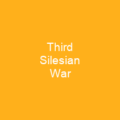The Second Silesian War: A Turning Point in European History
Imagine a world where two powerful nations, Prussia and Austria, are locked in a fierce struggle over the prized province of Silesia. This was the reality during the Second Silesian War (1744-1745), a conflict that not only reshaped the political landscape but also marked the rise of Prussia as a formidable European power.
The Prelude to Conflict
After the Treaty of Berlin in 1742, which gave Austria most of Silesia while requiring Prussian neutrality, tensions simmered. Austria expanded its alliances, while Prussia formed new ones with enemies of Austria to safeguard its interests. The stage was set for a clash that would define the next decade.
The War Begins
On May 22, 1744, Prussia made an alliance with Bavaria, Sweden, Hesse-Kassel, and the Electoral Palatinate to recover Emperor Charles VII’s territories. A parallel treaty committed France to support this League against Austria. With these alliances in place, Frederick led his troops into Bohemia on August 15, 1744.
Prussian Triumphs and Setbacks
The Prussians besieged Prague, which surrendered on September 16. However, the Austrians regrouped and drove the Prussians out of Bohemia by winter. The Prussians retreated to Upper Silesia, where they faced Austrian incursions throughout the cold season.
Turning Points in the War
The Treaty of Warsaw on January 8, 1745, further strengthened Austria’s position with a new ‘Quadruple Alliance.’ Meanwhile, Frederick abandoned Bohemia and concentrated his defenses around Frankenstein. The Austrians decisively defeated the Franco-Bavarian army at Pfaffenhofen in April.
The Final Push
With Prussian forces driven out of Bohemia, Austria renewed its offensive against Bavaria. By November 29, Leopold’s army had advanced into western Saxony and occupied Leipzig. Frederick launched a surprise attack on Charles’s camp at Katholisch Hennersdorf, destroying the Saxon elements of the allied army.
The Treaty of Dresden
On December 18, Prussian forces occupied Dresden. Peace talks began in Dresden, where Maria Theresa and Frederick Augustus II proposed a peace treaty recognizing Prussia’s control over Silesia and Glatz. The Treaty of Dresden was signed on December 25, 1745, ending the Second Silesian War.
Aftermath and Legacy
The Second Silesian War marked a significant victory for Prussia, confirming its control over Silesia. This conflict also deepened Austria’s hostility toward Prussia, leading to the formation of an anti-Prussian alliance that would spark the Third Silesian War in 1756.
Conclusion
The Second Silesian War was a pivotal moment in European history, setting the stage for Prussia’s rise as a great power and shaping the complex alliances that defined the next century. As Frederick the Great emerged from this conflict with his reputation solidified, it became clear that the struggle over Silesia would continue to define the political landscape of Europe.

You want to know more about Second Silesian War?
This page is based on the article Second Silesian War published in Wikipedia (retrieved on November 27, 2024) and was automatically summarized using artificial intelligence.







